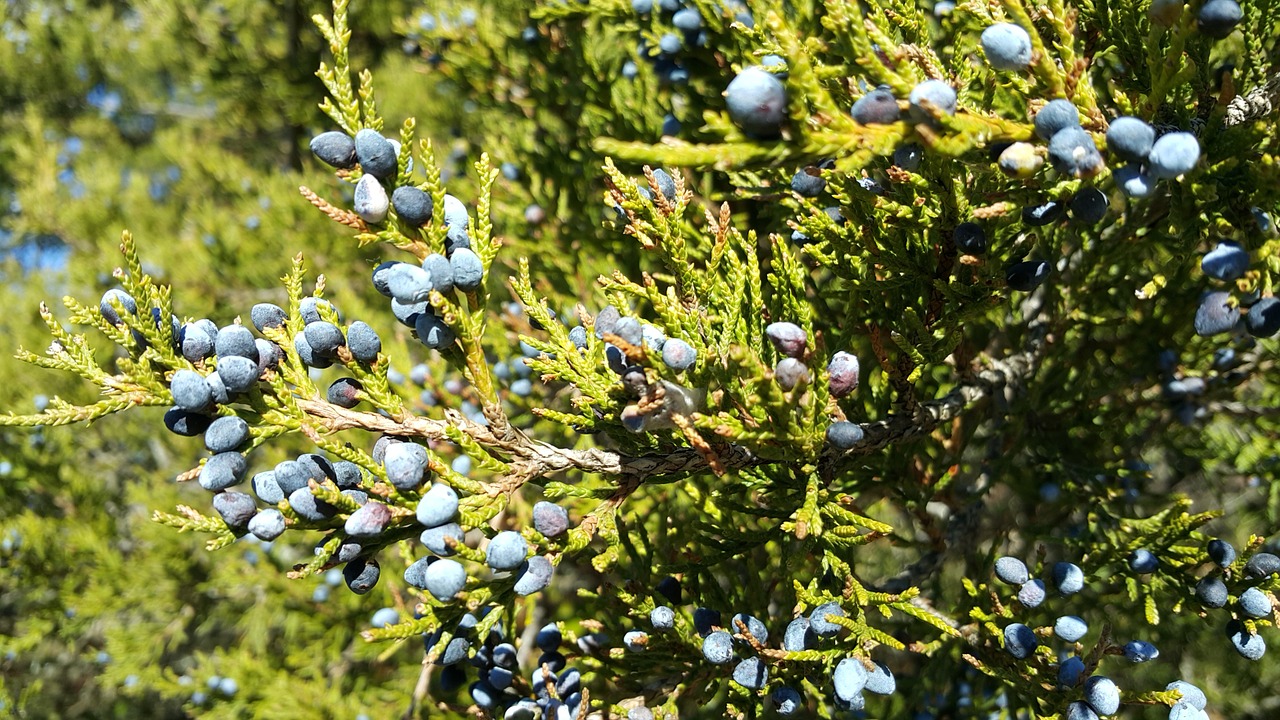Red Trail

Eastern Redcedar
Further along to your right, note the change to a pine forest.
Pine Forests
In the Virginia forest, trees are classified as either evergreen when they retain their leaves (usually needles) year-round or deciduous when they shed their leaves in the fall. Because they retain their leaves year-round, evergreens, including pines, junipers, hemlocks and hollies provide excellent winter food and cover.
Evergreens that bear cones are called conifers. Titmice, chickadees and some finches feed on their tiny seeds and use their needles for nest building. Pines provide favorite nesting sites for mourning doves, sparrows, and of course, the pine warbler.
The eastern redcedar, the most widely distributed of the northeast conifers, produces nutritious berries that are consumed by many kinds of wildlife, including the cedar waxwing, named for this tree. The redcedar's dense branching provides valuable cover in winter and in severe weather. For its many important wildlife habitat qualities, redcedar was named among the top ten native plants by the National Wildlife Federation.